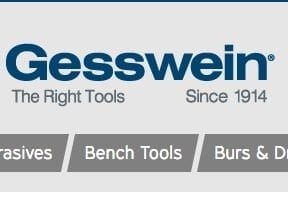Last month, in “For Success in Ecommerce, Answer ‘Why?’,” I explored reasons for launching an ecommerce business. Understanding the “Why,” “What,” and “How” is critical to succeeding in any type of business. For ecommerce today, the what — what type of business? — is more critical than ever.
Ten years ago, most new ecommerce businesses were pure-play retailers. They saw a market opportunity, sourced appropriate products, and launched an online store. In many cases, their competitors were other pure-play retailers, catalog sellers, or Amazon. The what was much simpler then.
There are many ecommerce opportunities for today’s entrepreneur. The important thing is to choose one that closely aligns to your expertise, relationships, and capital.
In this post, I’ll explore those opportunities — the what. That is, what type of ecommerce business should you pursue?
Pure-play Ecommerce Store
New online stores are launched daily. Most target a narrow niche because of the extreme competition for mass-market products from Amazon, Walmart, and other huge retailers.
For success with this model, an entrepreneur should possess:
- Digital marketing and ecommerce skills;
- Capital to hire additional expertise;
- Strong supplier relationships or your own brand of products;
- Strong knowledge about your target market.
Unlike ten years ago, there are now many easy-to-use, low-cost ecommerce platforms and tools. That’s the good news. The bad news is that the barrier to entry is low, and it’s very difficult to create visibility for a new store.
Be prepared to invest heavily in creating a compelling customer experience. This likely includes producing original content and investing in marketing to attract customers. Choosing the right products with a reliable supply chain is also crucial.
Many new retailers utilize drop shipping, whereby they source materials from companies that will ship directly to customers. This greatly simplifies fulfillment operations and eliminates inventory investment. But, with drop shipping, margins are typically tight.
Marketplace Selling
Selling on marketplaces, such as Amazon, Walmart, has experienced incredible growth. Amazon now receives roughly the same amount of revenue from sales of third-party products as from its own inventory. There are now thousands of marketplace sellers.
The business model for marketplace selling is very different from a pure-play store. Margins are typically tighter on marketplaces; pricing is fluid and dynamic. Marketplace selling requires close management. Sellers can fulfill orders in-house or they can outsource, such as to Fulfillment by Amazon, which may further reduce margins. Customer service is paramount.
For mass-market and consumable products, success requires huge volumes, as gross-profit margins are often 10 percent or less.
There are many marketplaces to consider, depending on the products. Each has pros and cons.
Manufacturers: Direct to Consumers
Companies that manufacture their own products or control private brands have many options.
- Set up an online store and sell directly to consumers.
- Sell on marketplaces with all products, or with a subset to maintain exclusivity and margins.
- Sell to wholesale distributors that service online and brick-and-mortar retailers.
- All of the above.
Manufacturers are in control today. Certainly there are pros and cons to starting a manufacturing business. It can be expensive and carry much liability.
An alternative is to source products and create a brand. It still requires an investment in establishing the brand and promoting it. But successful companies are emerging with this model in all types of markets — clothing to electronics.
Sell Products to Other Retailers
If you have strong relationships with manufacturers or wholesalers, consider selling to other online retailers. When I ran my ecommerce jewelry business, it was our supplier connections that allowed us to maintain high margins. Those margins also allowed us to sell some products as a wholesaler to other stores — online and physical. It’s worth considering if your supply chain is strong enough.
Brick-and-mortar: Migrating Online
Brick-and-mortar merchants that sell online represent a huge growth area in specialty markets, such as men’s and women’s clothing. Local and regional physical retailers often have long-term relationships with suppliers. As more of those physical retailers cut back on inventory, consumers are quick to shop online for their favorite brands.
Local retailers that invest in an online store accomplish a few things.
- Better serve their existing local customers. Rather than travel to the physical store to see inventory, they can browse the online store, order online, and pick up in the physical location.
- Create a national presence. This is easier for retailers who carry limited-distribution products. For example, I’ve recently purchased men’s clothing items from local retailers outside of my local trade area. They carried a specific brand of clothes I was looking for and provided a solid online store and customer service.
- Sell on Amazon or other marketplaces.
The investment in migrating online can be minimal. It can also be substantial depending on the desired reach.



